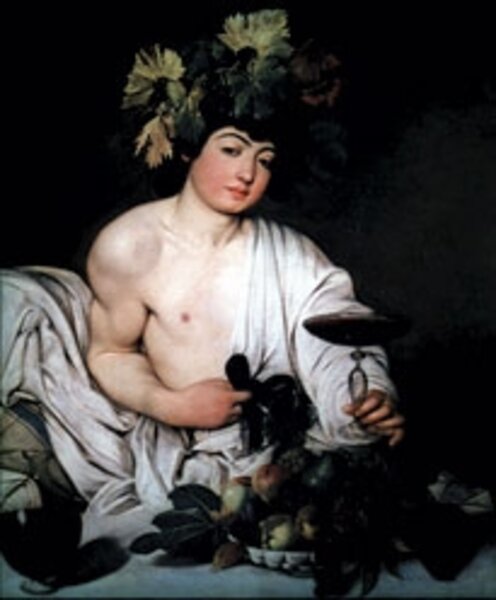Italy: Is that Caravaggio hiding in that painting?
Loading...
• A local, slice-of-life story from a Monitor correspondent.
ROME – It is the sort of intriguing, self-referential clue that author Dan Brown would have his hero, the cerebral “symbologist” Robert Langdon, chasing after in one of his bestselling books.
But the tiny self-portrait that Italian art historians believe they have found in an oil painting by Caravaggio is real.
The painting, “Bacchus,” was completed by the Renaissance master in 1597 and depicts the mythical god of wine. On a table in front of him is a carafe of dark red wine. So far, so ordinary – at least by the standards of 16th-century art.
But researchers have used an infrared technique called multispectral reflectography to “peer” through centuries of grime and added layers of paint and claim to have detected a miniature self-portrait. It shows a man, thought to be Caravaggio at the age of about 25, with dark curly hair, peeking out from inside the carafe.
The research team says he is holding a paintbrush while working at an easel and that his nose and the dark shadows of his eyes are visible.
The minuscule figure was first noticed in 1922 when the canvas was cleaned by an Italian restorer.
But the painting was then subjected to poor restoration efforts and the image darkened until it eventually became invisible to the naked eye.
Presenting the rediscovery at a conference in Florence, art historian Roberta Lapucci said: “It clearly shows a very young Caravaggio at work, paintbrush in hand.”
An American expert on Caravaggio remains to be convinced, however.
“I thought the slide they showed us was blurry and inconclusive,” says Florence-based John Spike, who has written several books about Caravaggio. “You really need quite a lot of imagination to see it as a person.”
The debate is likely to intensify: Next year is the 400th anniversary of Caravaggio’s death, and preparations are under way for several major exhibitions.





